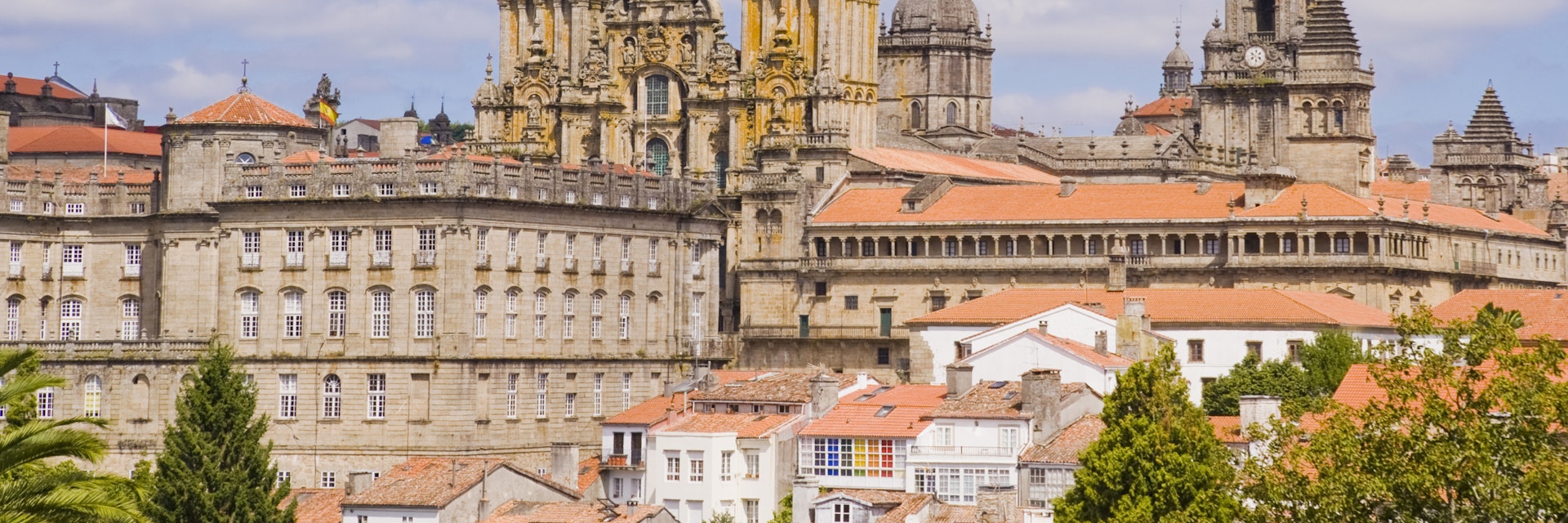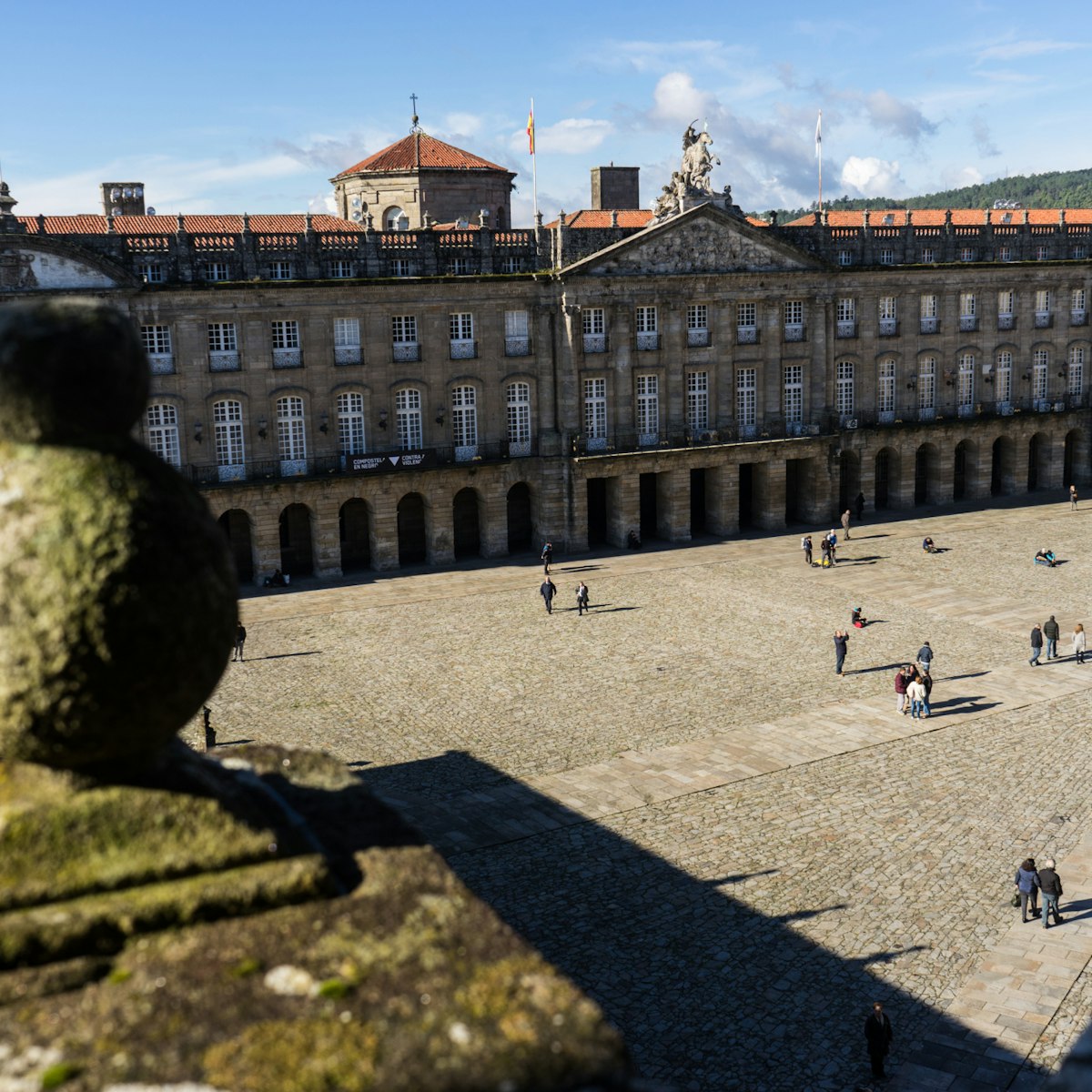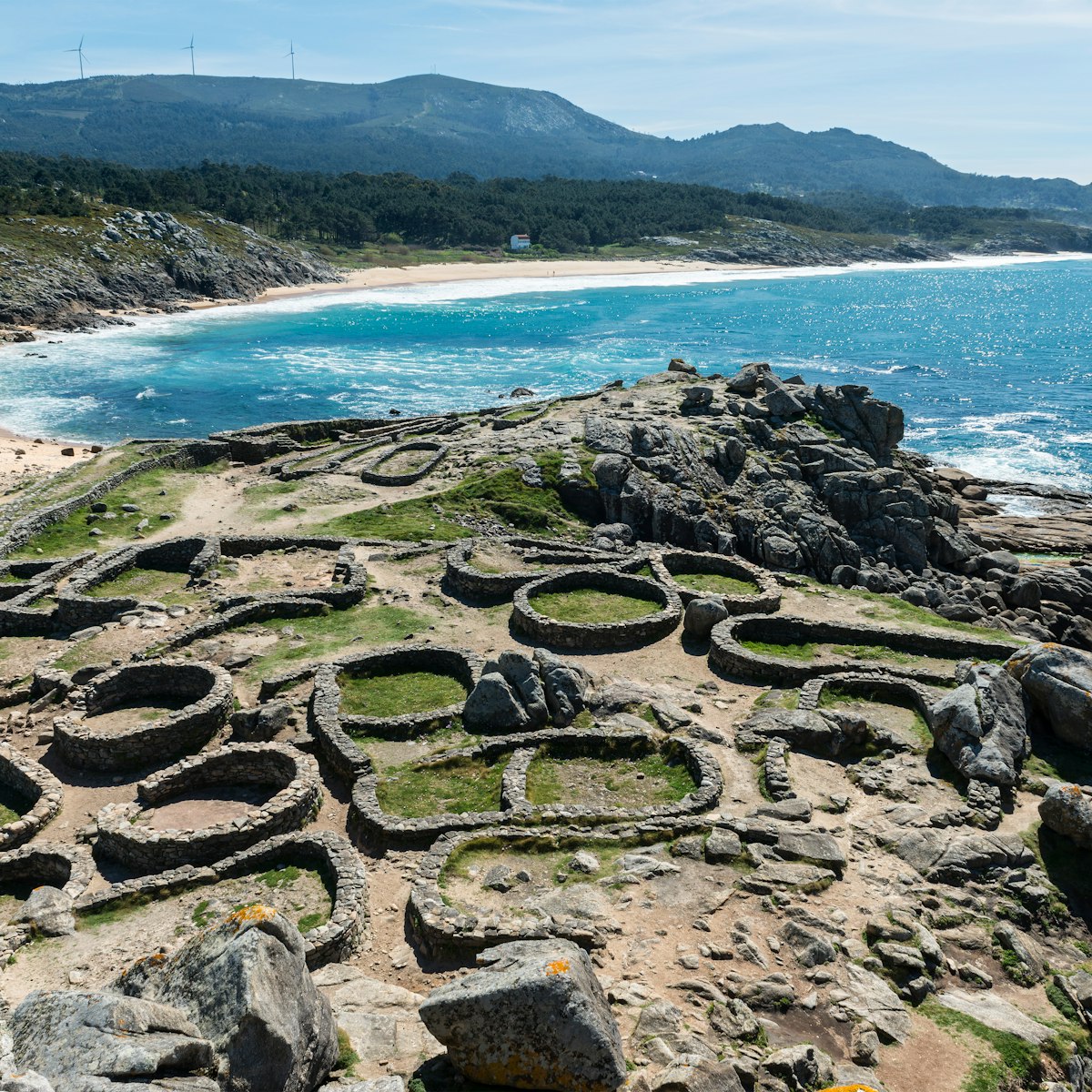The grand heart of Santiago, the cathedral soars above the city in a splendid jumble of spires and sculpture. Built piecemeal over several centuries, its beauty is a mix of an original Romanesque structure (constructed between 1075 and 1211) and later Gothic and baroque flourishes. The tomb of Santiago beneath the main altar is a magnet for all who come here. The cathedral's artistic high point is the Pórtico de la Gloria inside the west entrance, featuring 200 masterly Romanesque sculptures.
Over the centuries the cathedral has suffered considerable wear and tear from water seepage, settlement and humidity. A decade-long restoration programme, which saw parts of the building closed to visitors for years, was due to be completed by the end of 2020. The magnificent baroque western facade facing Praza do Obradoiro, and the Pórtico de la Gloria just inside it, are among sections that have been returned to their former glory. Before the restoration works, the main entrance to the cathedral was through this Obradoiro facade, erected in the 18th century to replace the weather-damaged Romanesque one. Today the main entrance is from Praza das Praterías by the southern facade – the only one that conserves its original Romanesque form.
Visits to the artistically unparalleled Pórtico de la Gloria (Galician: Porta da Gloria) are limited to 25 people at a time. Guided visits of 45 minutes are given several times daily, with tickets sold up to 90 days ahead through the cathedral website or on the same day (if available) at the Pazo de Xelmírez, the 12th-century bishop's palace adjoining the cathedral, where the tour starts. Book as far ahead as possible. Tours are normally in Spanish but occasionally in English: you can ask at the Pazo on the day of your visit and change your tour time if necessary. Fifteen-minute unguided visits happen between 7pm and 8pm Monday to Saturday; 50 general-public tickets (free) for these are given out on a first-come-first-served basis between 7pm and 8pm the day before at the Fundación Catedral office in the Casa do Deán. For Monday visits go on Saturday. Take your ID document.
The Pórtico de la Gloria features 200 Romanesque sculptures by Maestro Mateo, who was placed in charge of the cathedral-building programme in the late 12th century. Now with much of their original colour restored, these detailed, inspired and remarkably lifelike sculptures in Galician granite add up to a comprehensive review of major figures and scenes from the Bible. The Old Testament and its prophets (including a famously smiling Daniel) are on the north side, the New Testament, Apostles and Last Judgment on the south, and glory and resurrection are depicted in the central archway.
The main figure in the central archway is a throned, resurrected Christ, surrounded by the four evangelists plus angels and symbols of Jesus' passion. Below Christ's feet is Santiago, and below him Hercules or Samson, holding open the mouths of two lions. Traditionally, visitors arriving in the cathedral said a brief prayer while placing their fingers in five holes above Hercules' head, created by the repetition of this very act by millions of faithful over centuries. On the central pillar's other side is a sculpture believed to represent Maestro Mateo himself. Another tradition called for visitors to bump heads with the maestro to acquire some of his genius. Countless knocks led to Mateo's notably flat nose; he and Hercules are now blocked off by metal barriers.
The three naves of the cathedral's main body are separated by majestic lines of Romanesque arches. Towards the east end of the building rises the fantastically elaborate, Churrigueresque Altar Mayor (High Altar). From the right side of the ambulatory (walkway) running round behind the Altar Mayor, a small staircase leads up to a statue of Santiago that has watched over the cathedral since its consecration in 1211. The faithful queue up here to kiss or embrace the statue. From the statue you emerge on the left side, then descend some steps into the Cripta Apostólica, where we are assured Santiago's remains lie, inside a large 19th-century silver casket. Behind the Altar Mayor is the Puerta Santa, which opens onto Praza da Quintana and is cracked open only in holy years – years when Santiago's feast day, July 25, falls on a Sunday, and plenary indulgence (forgiveness of all sins) is granted to pilgrims – bringing even bigger numbers of people than usual flooding in Santiago. This happens in 2021 and 2027.
A pilgrims' Mass is usually celebrated at the Altar Mayor at noon, and other Masses at least once daily. Check to see if the cathedral's rooftop tours resume after the restoration finishes. They offer fabulous views of the city, and of the cathedral's interior from its upper storeys.



